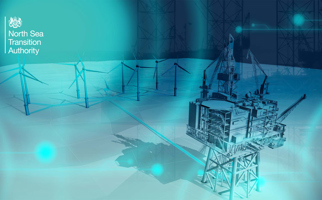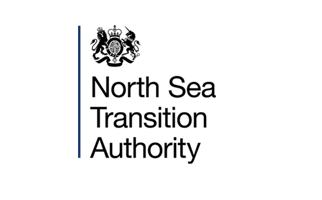
In consultation with the industry, we have developed stewardship expectations across the oil and gas lifecycle, for operators and licensees. In July 2019 a refreshed set of stewardship expectations were launched, to reflect three years of experience since first issue in 2016.
In March 2021 a new net zero expectation was launched (Stewardship Expectation 11), and in May 2021 a new supply chain collaboration and cooperation expectation was launched (Stewardship Expectation 12).
These expectations promote industry good practice and support economic recovery and the drive to net zero carbon by 2050. They aim to further stimulate upstream activity, maintain and support performance improvements while continuing to maintain high standards of safety and environmental management.
In July 2019, two expectations were added: Well activity performance; and Commercial alignment and delivery. The first promotes successful delivery of well activity throughout the lifecycle using systematic deployment of existing practices and learning during planning and execution phases. The second, commercial alignment and delivery, promotes the adoption and implementation of existing good commercial practices to enable activity to progress in a manner and pace consistent with licensees’ obligations in the Strategy.
The net zero expectation sets out how the oil and gas industry should reduce its greenhouse gas (GHG) emissions and support delivery of the UK’s net zero target and focuses on the following areas:
- Creating a culture of GHG emissions reduction within the United Kingdom Continental Shelf (UKCS)
- Ensuring that GHG emissions reduction is considered throughout the entire oil and gas lifecycle
- Collaboration between all relevant parties to support and progress potential energy integration developments (such as electrification, carbon capture and storage and hydrogen).
In June 2021, and in accordance with the move to net zero carbon by 2050, the NSTA also issued consolidated and updated guidance on flaring and venting, which sets out a tougher approach to driving reductions, through clear principles and using the NSTA consenting regime and stewardship activity.
Stewardship expectation 12 outlines the ways in which companies should collaborate with their supply chain contractors
Stewardship expectations cover the following areas:
Stewardship Expectation 1 - Joint venture hub strategy
Stewardship Expectation 2 - Delivering exploration and appraisal work programmes
Stewardship Expectation 3 – Optimum use of subsurface data
Stewardship Expectation 4 – Well activity performance
Stewardship Expectation 5 – Robust project delivery
Stewardship Expectation 6 - Integrated field management
Stewardship Expectation 7 – Commercial alignment and delivery
Stewardship Expectation 8 – Technology deployment
Stewardship Expectation 9 – Build a culture of collaboration
Stewardship Expectation 10 – Cost effective decommissioning
Stewardship Expectation 11 - Net zero
Stewardship Expectation 12 - Supply chain collaboration and cooperation
An accompanying overview document introduces the refreshed Stewardship Expectations and provides context for and a precis of how the Stewardship Expectations should be implemented.
We will observe the performance of operators and licensees against the stewardship expectations and, if appropriate, seek to improve performance in relation to particular assets. Where an expectation has not been achieved, following discussions with the licensee, we may consider whether or not the licensee is complying with their obligations under the Strategy.
Asset Stewardship Expectations and Overview
Click on the items on the left to download.
Asset Stewardship Expectations and Overview
-
Stewardship Expectations Overview PDF - 1mb
-
Stewardship Expectation 1: Joint Venture Hub Strategy PDF - 468kb
-
Stewardship Expectation 2: Delivering Exploration and Appraisal Work Programmes PDF - 489kb
-
Stewardship Expectation 3: Optimum Use of Subsurface Data PDF - 412kb
-
Stewardship Expectation 4: Well Activity Performance PDF - 325kb
-
Stewardship Expectation 5: Robust Project Delivery PDF - 371kb
-
Stewardship Expectation 6: Integrated Field Management PDF - 397kb
-
Stewardship Expectation 7: Commercial Alignment and Delivery PDF - 376kb
-
Stewardship Expectation 8: Technology Deployment PDF - 198kb
-
Stewardship Expectation 9: Build a Culture of Collaboration PDF - 351kb
-
Stewardship Expectation 10: Cost-Effective Decommissioning PDF - 457kb
-
Stewardship Expectation 11: Net Zero PDF - 279kb
-
Stewardship Expectation 12: Supply Chain Collaboration and Cooperation PDF - 228kb
Click on the items on the left to download.
The below documents provide guidance on the NSTA's process to assess operators' collaborative behaviour.
Collaboration Toolkit
Click on the items on the left to download.
Collaboration Toolkit
-
Collaborative Behaviour Quantification Tool: Assessment Guidance Note DOCX - 241kb
-
Collaborative Behaviour Quantification Tool. Appendix A: Scoring collaborative behaviours DOCX - 237kb
-
Collaborative Behaviour Quantification Tool. Appendix B: Examples of scoring output DOCX - 265kb
Click on the items on the left to download.


